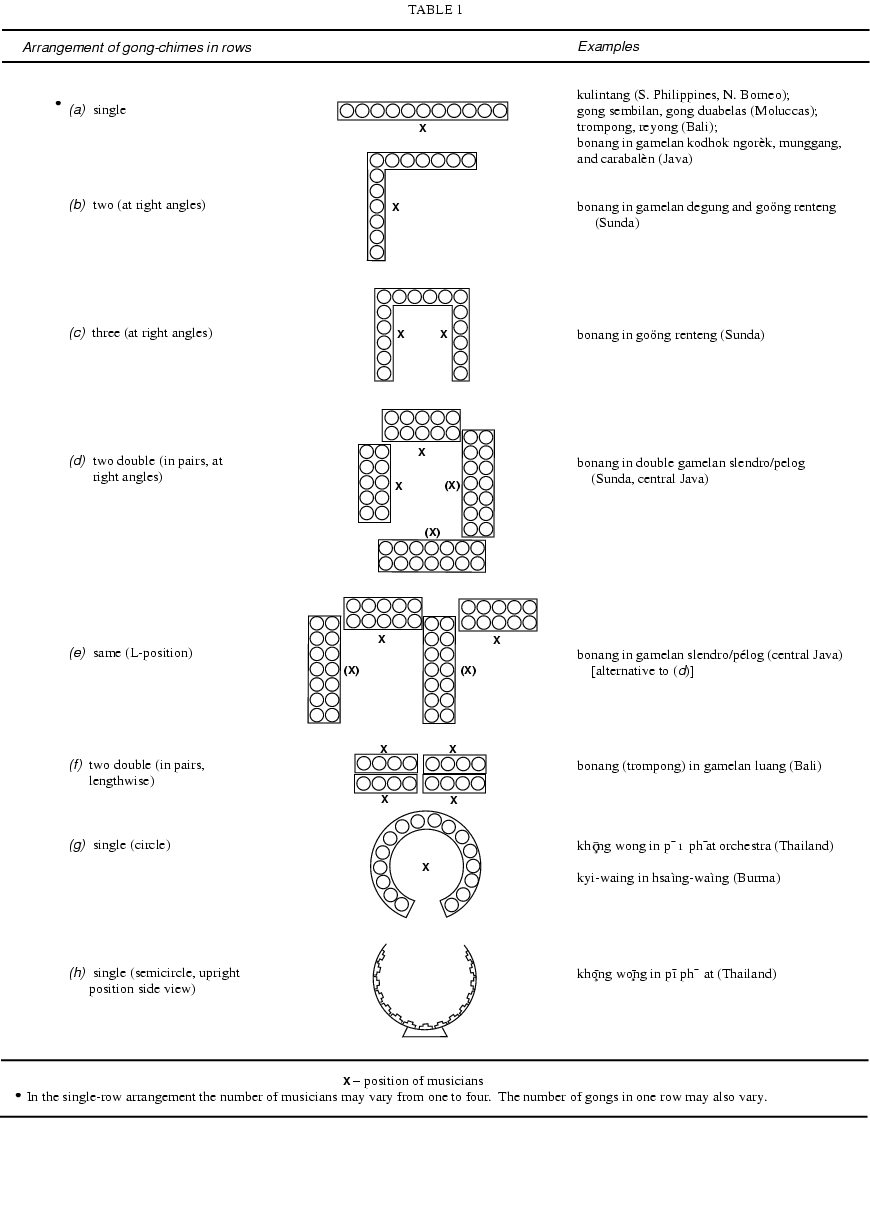
Generic term for a set of small high-pitched bossed gongs placed upright, usually in a row in pitch order stepwise, on or in a wooden frame, and played by one to four musicians (each usually with two sticks (see Table 1). Such instruments are common in many South-east Asian ensembles. Their playing styles are almost invariably characterized by high rhythmic and melodic density requiring much skill. Gong-chimes either have a prominent soloistic role in the ensemble with virtuoso melodic embellishments (generally the smaller, high-pitched gong-chimes), or they provide rhythm and colour, sometimes having a colotomic role, as with lower-pitched gong-chimes. In Javanese and Balinese gamelan all these playing styles are used.

Sets of hand-held tuned gongs played with high rhythmic density (usually in interlocking style) may also be included in the term ‘gong-chime’. Such are the old type of Balinese reyong, the Philippine gangsa, and the gong ensembles of some of the Vietnamese minorities of the mountainous interior.
ERNST HEINS/R